Express your style with a comprehensive look at sterling silver vs white gold as we explore the unique qualities of each metal. This guide offers essential insights to help jewelry lovers make informed choices and enhance their collections.
Overview of Composition in Sterling Silver and White Gold
When considering sterling silver vs white gold, understanding the composition of each material is crucial. Both have distinct properties that contribute to their overall appeal and functionality.
Composition of Sterling Silver
Sterling silver is primarily made up of 92.5% silver and 7.5% other metals, usually copper. This combination enhances its strength and workability while maintaining the beauty of silver. The copper content is what helps to minimize tarnishing, though it can still occur over time.
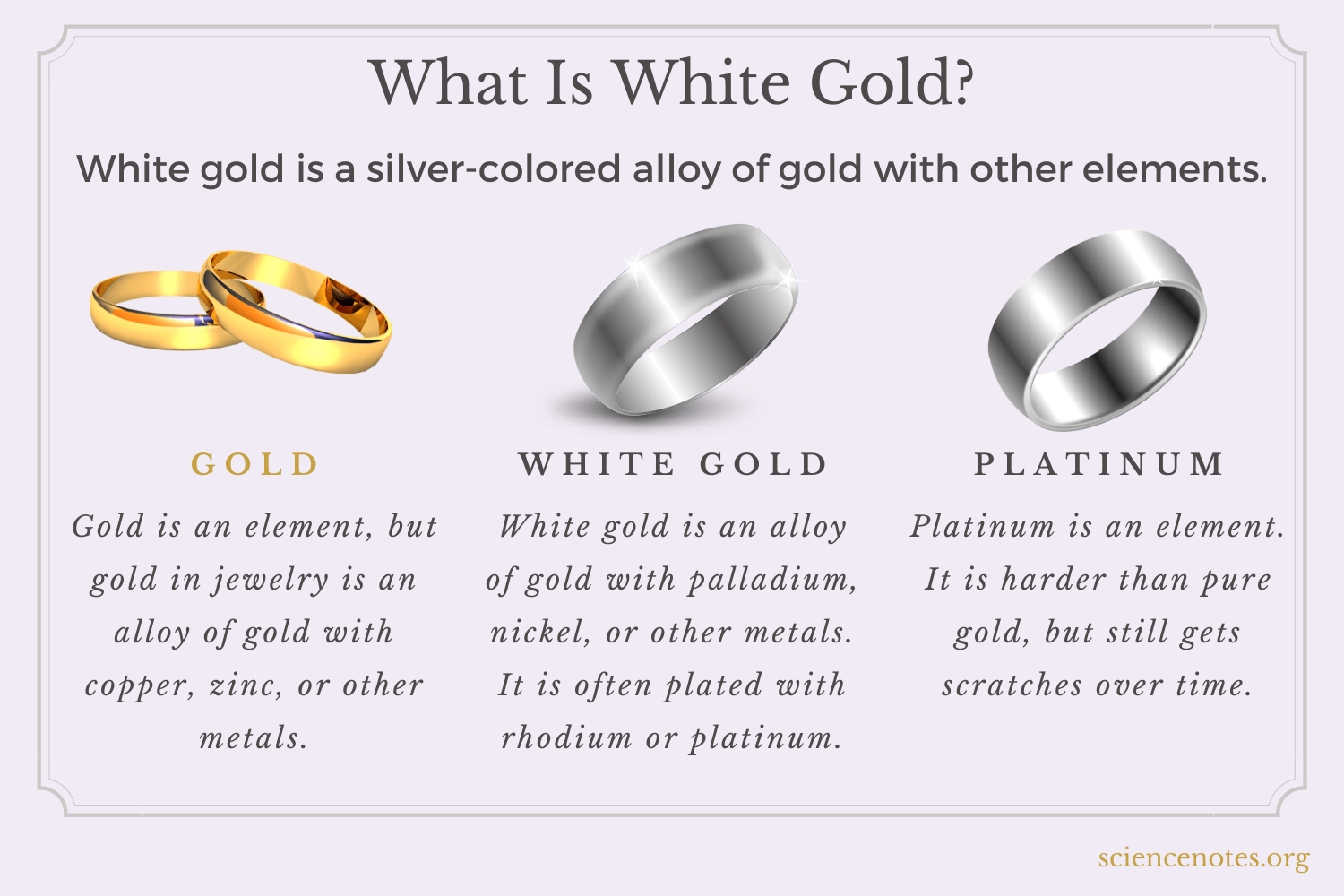
The high silver content gives sterling silver its hallmark brightness and reflectivity. This makes it a popular choice for various jewelry items, including rings, necklaces, and bracelets, allowing for intricate designs that showcase its beauty.
Composition of White Gold
White gold is an alloy that typically consists of yellow gold mixed with other metals such as palladium, nickel, or silver. The percentage of gold in white gold can vary, with common options being 14k and 18k. This blend is also fused with rhodium plating to enhance its brightness and provide a beautiful, reflective surface.
The other metals mixed into white gold not only improve durability but also give it a distinct hue that differs from sterling silver. This composition makes it an excellent choice for settings in engagement rings, earrings, and other fine jewelry.
Aesthetic Differences Between Sterling Silver and White Gold
Understanding how sterling silver vs white gold appears to the eye can greatly influence your choice in jewelry. Each material has its own unique aesthetic properties that contribute to its appeal.
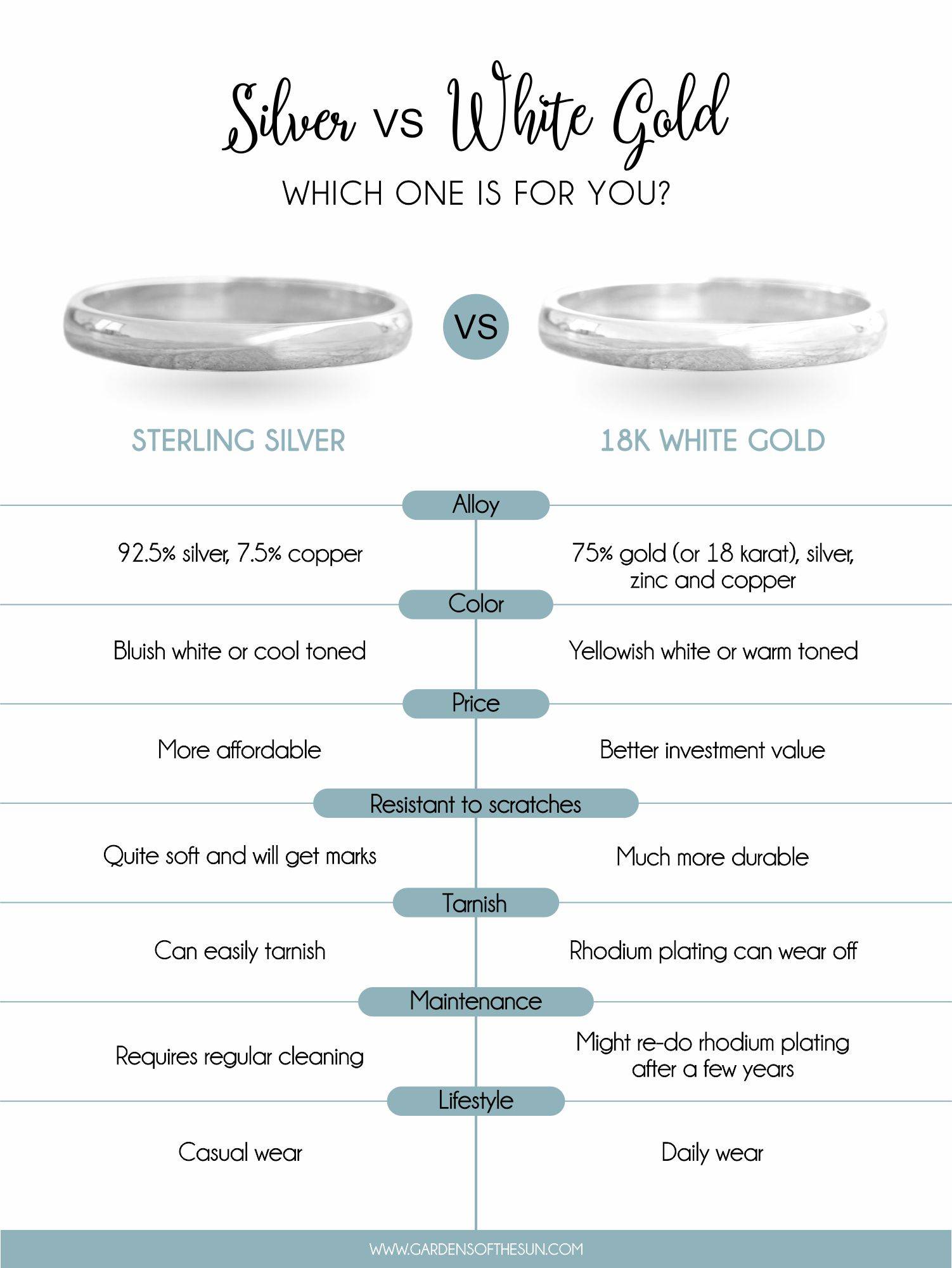
Visual Characteristics of Sterling Silver
Sterling silver presents a soft, warm sheen that many find appealing. Its natural luster allows it to catch the light beautifully, giving jewelry a classic and timeless look. Due to its composition, sterling silver may develop a patina over time, which adds character and can be polished back to its original state.
This warm vibrancy makes sterling silver particularly popular for more casual or vintage-style jewelry. Its dueling aesthetics appeal to those favoring either modern simplicity or a classic vibe.
Visual Characteristics of White Gold
White gold exudes a sleek, elegant appearance that is often associated with luxury. Its bright, shiny finish, enhanced by rhodium plating, reflects light beautifully and has a more contemporary feel compared to sterling silver.
The neutral tone of white gold allows it to pair seamlessly with a variety of gemstones, making it a preferred choice for sophisticated and modern designs. Whether set with diamonds or colored stones, white gold elevates the overall elegance of any piece.
Durability Factors of Sterling Silver and White Gold
Durability can be a significant consideration when examining sterling silver vs white gold. Knowing how each material performs over time can be essential for making informed jewelry purchases.
Durability of Sterling Silver
While sterling silver is reasonably durable due to its alloy composition, it remains softer than white gold. It can be scratched or dented more easily, particularly when subjected to everyday wear. The tendency to tarnish requires regular maintenance, including cleaning and polishing, to maintain its shine.
However, many appreciate sterling silver for its malleability, which allows jewelers to craft intricate designs without compromising strength. With proper care, sterling silver can last a lifetime, but it may require more attention than some other materials.
Durability of White Gold
White gold is notably more durable than sterling silver, owing to its alloyed metals. The combination of nickel or palladium enhances its resistance to scratches and other forms of wear. The rhodium plating further protects the underlying gold, though it may need to be reapplied over time to maintain its appearance.
As a more robust material, white gold is typically preferred for items subjected to frequent wear, such as engagement rings. Its resilience means that, with proper maintenance, it can endure the rigors of daily life effectively.
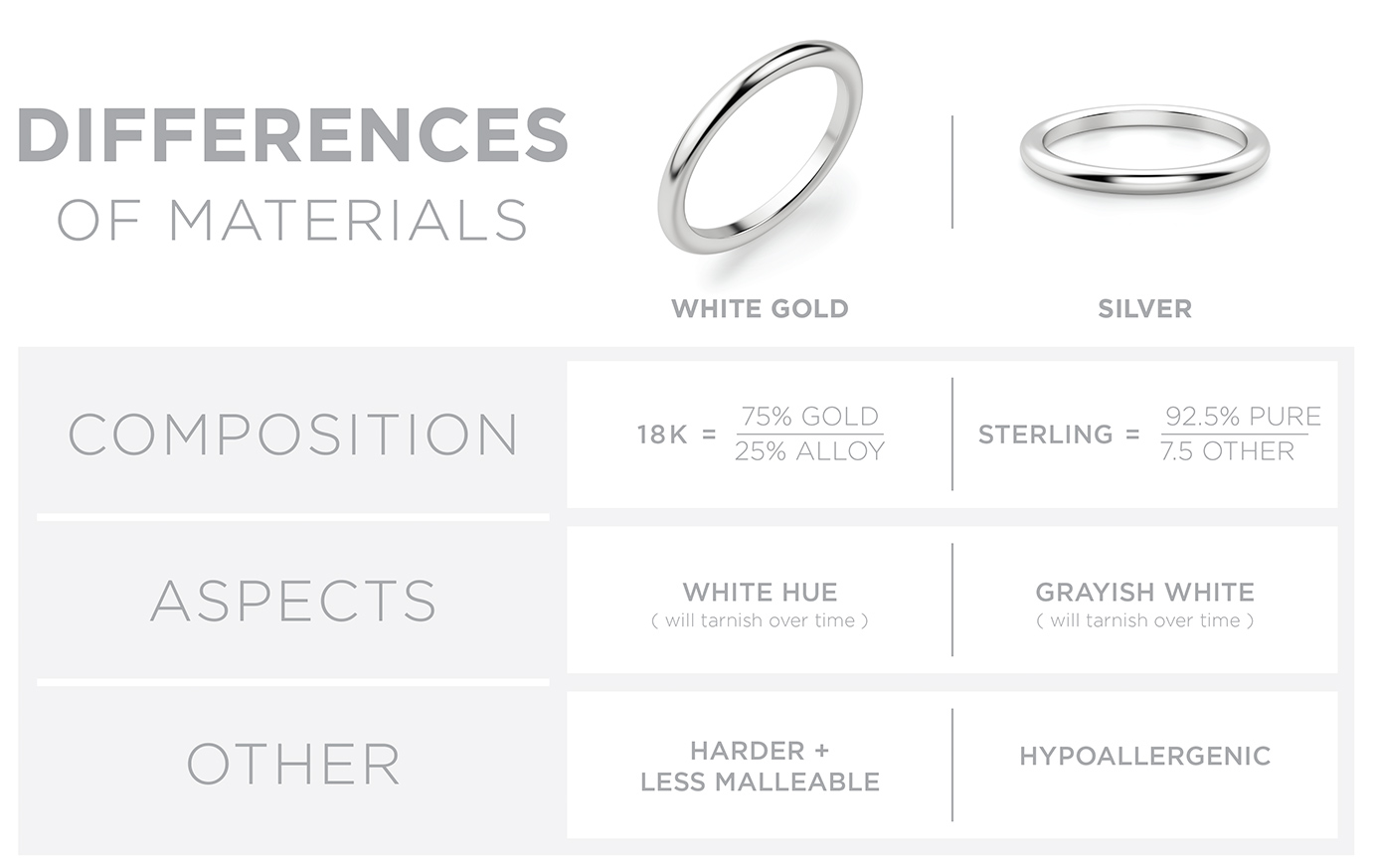
Pricing Comparison of Sterling Silver and White Gold
When comparing sterling silver vs white gold, pricing often plays a pivotal role in the purchase decision. Each material holds different value in the market depending on various factors.

Pricing of Sterling Silver
Sterling silver is generally more affordable than white gold, making it an excellent option for budget-conscious buyers. The lower market price reflects the lower gold content and intrinsic value associated with silver.
This accessibility allows consumers to invest in fine jewelry without stretching their finances too far. While the initial purchase price may be lower, considerations for tarnishing and maintenance should also factor into long-term ownership costs.
Pricing of White Gold
White gold tends to be more expensive due to its higher gold content and alloying materials. The price can vary significantly based on the karat rating (14k vs 18k) and the added rhodium plating.
While the upfront cost is higher, white gold is often viewed as an investment due to its enduring popularity and resilience. Customers may find that the long-term value justifies the initial expense, particularly for heirloom pieces intended to be passed down through generations.
Maintenance Requirements for Sterling Silver and White Gold
Maintenance plays a crucial role in the longevity and appearance of jewelry, especially when thinking about sterling silver vs white gold. Understanding the care requirements of each can assist in maintaining their beauty.
Caring for Sterling Silver
Sterling silver requires more frequent cleaning than white gold due to its susceptibility to tarnishing. Regular polishing with appropriate cloths or solutions designed for silver can help maintain the shine.
Additionally, storing sterling silver in anti-tarnish pouches or cloths when not in use can prevent oxidation. Keeping it away from moisture and chemicals also contributes to its upkeep, allowing owners to enjoy its beauty for years.
Caring for White Gold
White gold, while requiring less constant care, still benefits from regular maintenance to sustain its appearance. The rhodium plating may wear off over time, so occasional replating is recommended to restore its luminous finish.
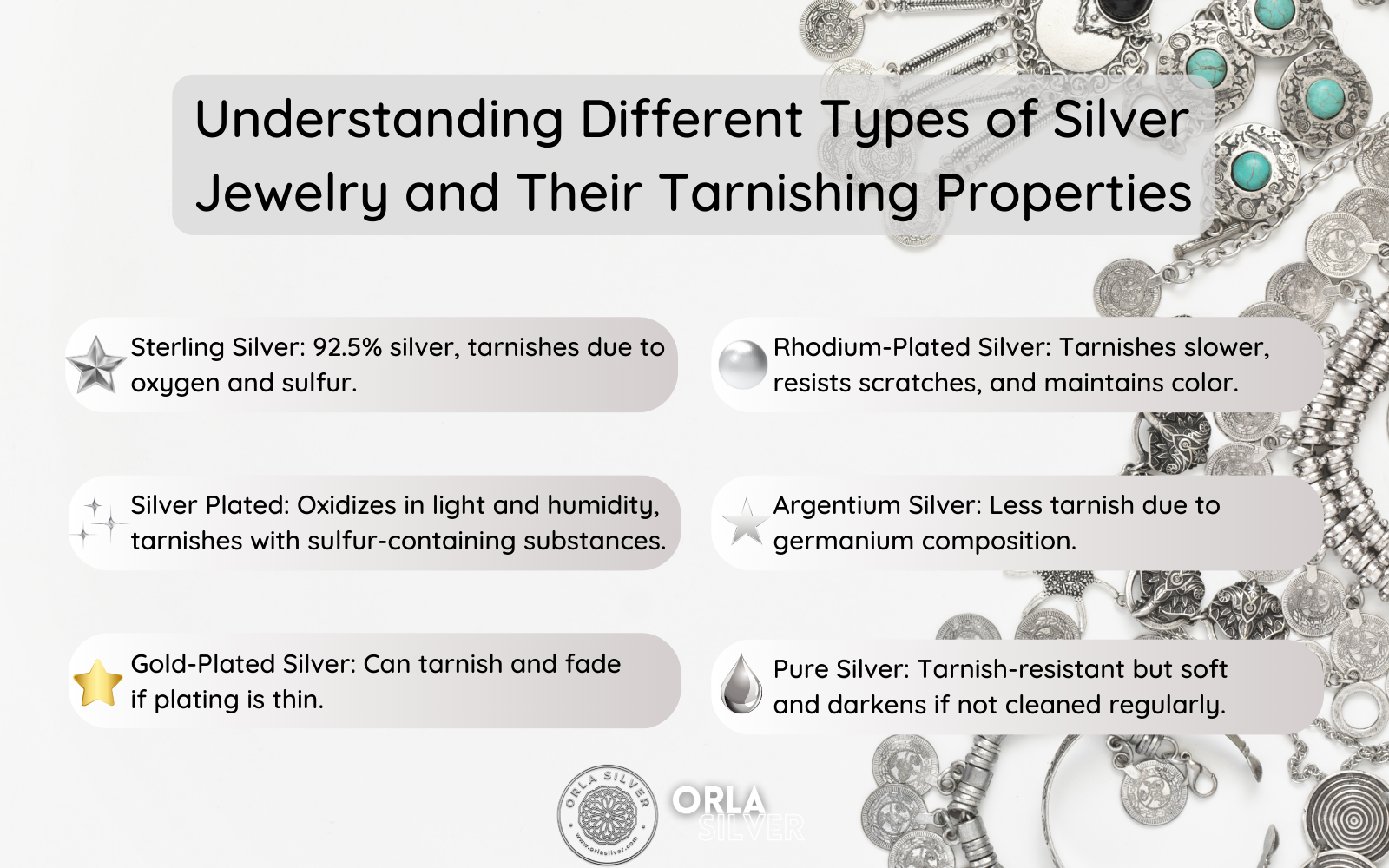
For everyday care, gently cleaning with a mild soap solution and a soft cloth is often sufficient. Storing white gold in a safe and dry place will also help prevent unnecessary scratches and preserve its elegance.
Allergen Considerations in Jewelry Options
Understanding potential allergens is essential in making a choice between sterling silver vs white gold, especially for those with sensitive skin.
Allergens in Sterling Silver
Because sterling silver contains copper, some individuals may experience allergic reactions when wearing the jewelry. This sensitivity varies from person to person, so it’s advisable to test the material before purchasing.
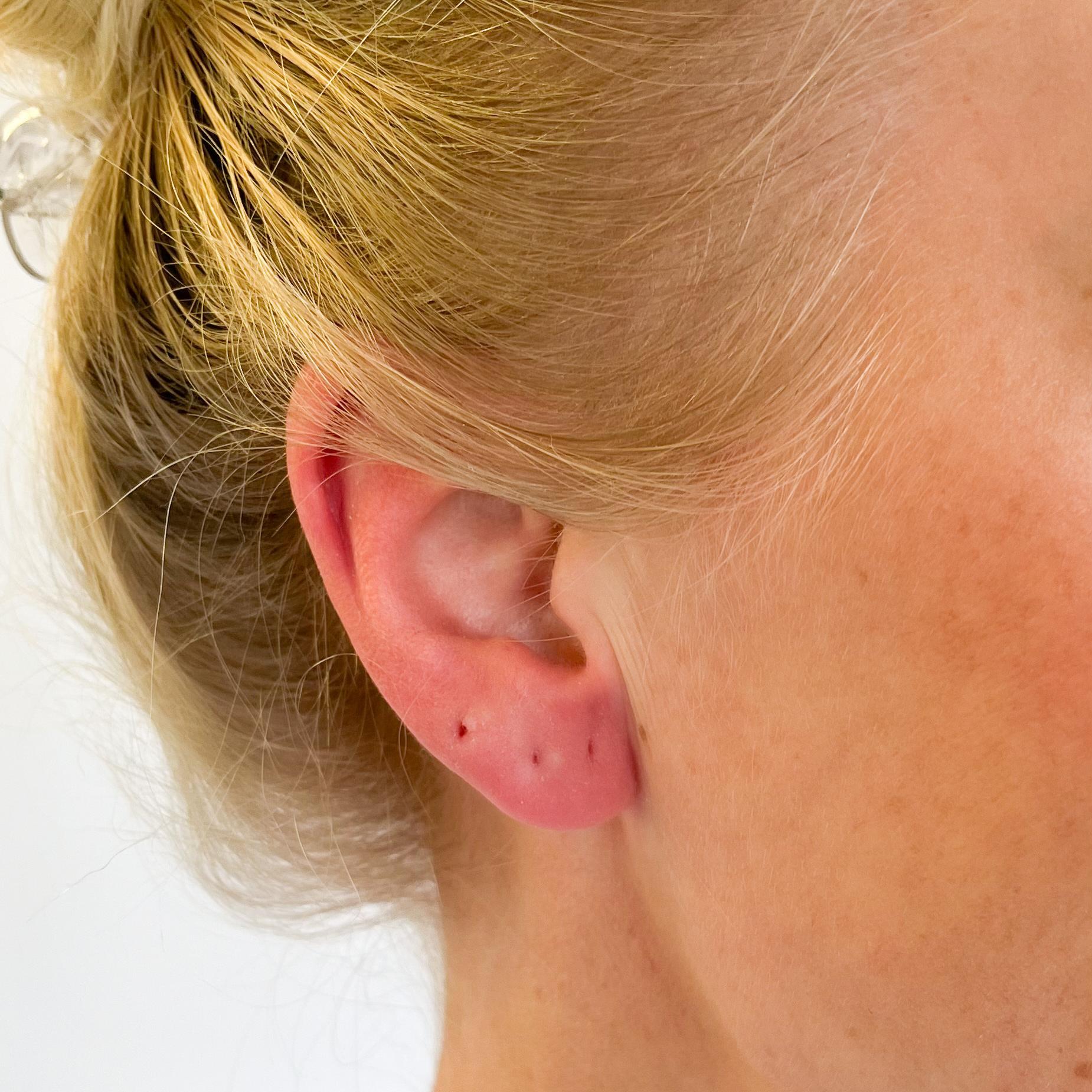
For those with known sensitivities to metals, it’s essential to consider hypoallergenic options or rhodium-plated sterling silver which may mitigate reactions, providing a stylish alternative.
Allergens in White Gold
White gold can also present allergenic challenges, particularly due to the nickel often used in its alloy. Many individuals are sensitive to nickel, which can lead to contact dermatitis or irritation when wearing jewelry.
However, many manufacturers offer nickel-free white gold variations, utilizing palladium instead. When selecting white gold jewelry, it’s prudent to inquire about its composition to ensure comfort and safety.
Popular Uses for Sterling Silver and White Gold Jewelry
Both sterling silver vs white gold find widespread use in various types of jewelry, appealing to diverse tastes and preferences.
Common Applications of Sterling Silver
Sterling silver is highly favored for jewelry such as bangles, earrings, and charm bracelets. Its affordability and versatility make it an excellent choice for trendy pieces and collections.
Many artisans and designers also prefer sterling silver for crafting unique, handmade items, allowing for more creativity and artistic expression in forms of jewelry. This often results in one-of-a-kind pieces that carry an artistic flair.
Common Applications of White Gold
White gold is predominantly used in engagement and wedding rings due to its classic elegance and ability to accentuate gemstones beautifully. It is also a common choice for fine jewelry items such as necklaces and earrings.
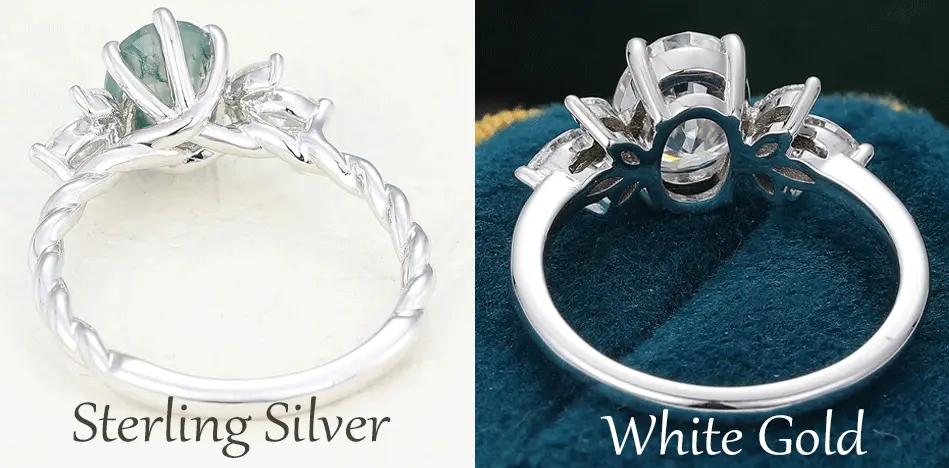
Additionally, white gold’s structural integrity makes it ideal for intricate settings that offer both visual appeal and secure gemstone placement. This marriage of beauty and function has entrenched white gold as a staple in luxury jewelry collections.
Longevity Expectations for Sterling Silver and White Gold
Considering the longevity of your jewelry is essential when weighing options like sterling silver vs white gold. Each material offers distinct advantages in terms of lifespan.
Longevity of Sterling Silver Jewelry
With proper care and maintenance, sterling silver can last many years and often becomes even more beautiful with age. The ability to polish and restore its finish enables owners to maintain their pieces over generations.
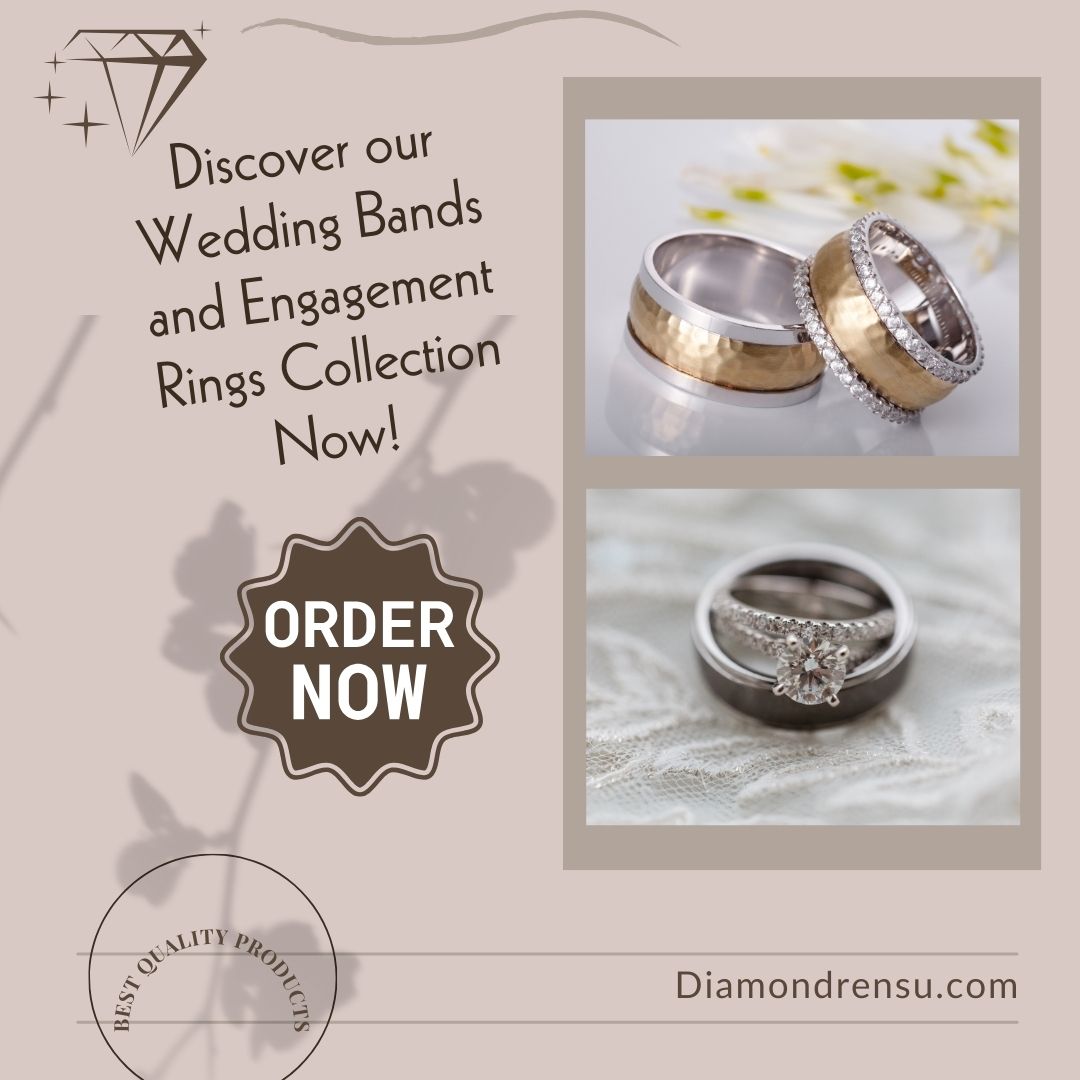
However, its softer nature means that care should be taken to prevent scratching or bending, which could affect its appearance and integrity. With conscientious ownership, sterling silver can indeed become a cherished heirloom.
Longevity of White Gold Jewelry
White gold typically surpasses sterling silver in longevity due to its hardness and resistance to wear. Even if the rhodium plating requires occasional restoration, the underlying material remains strong and durable.
When properly cared for, white gold can maintain its beauty and functionality for a lifetime. Its robustness makes it a favored choice for daily wear items, ensuring that it remains a valuable addition to any jewelry collection.
Evaluating Value for Money in Sterling Silver and White Gold Purchases
Determining value in terms of pricing and quality is important when looking into sterling silver vs white gold. Understanding how each material holds value can assist buyers in making the best choice.
Value for Money with Sterling Silver
Sterling silver provides excellent value for those looking for affordability without sacrificing style. Its lower price point enables consumers to purchase multiple pieces, thus expanding their collection.

While it may require regular maintenance, the accessible price makes it an appealing option for jewelry lovers who enjoy variety and trendy designs without a hefty investment.
Value for Money with White Gold
Investing in white gold often represents a higher upfront cost, but it is typically considered a more timeless investment. Its durability and aesthetic appeal contribute to its long-term value, making it worth the investment for many buyers.
As white gold continues to be a popular choice for fine jewelry, its resale value can also remain high. This potential for appreciation in value can make white gold an appealing option for those wanting to invest in heirloom quality pieces.
Invest in your jewelry knowledge by understanding the differences between sterling silver vs white gold. This article equips you with valuable insights to make informed choices, ensuring your selections enhance both your collection and personal style.
